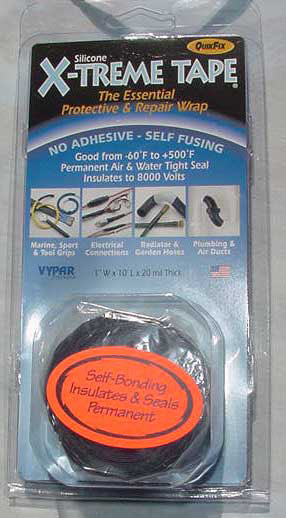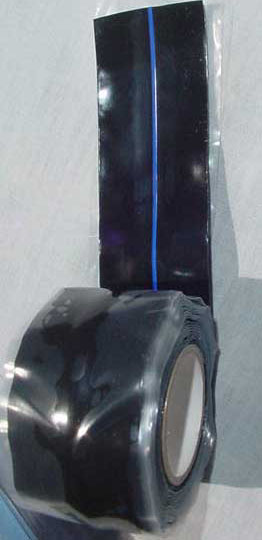THE SPARK
GAP
A monthly publication of the
Meridian
Amateur Radio Club September 2004
September 2004

Bible
Verse
Psalms 107:25-29 For he commanded,
and raised the stormy wind, which lifted up the waves of
the sea. They mounted up to heaven, they went down to the
depths; their courage melted away in their evil plight;
they reeled and staggered like drunken men, and were at
their wits' end. Then they cried to the LORD in their
trouble, and he delivered them from their distress; he
made the storm be still, and the waves of the sea were
hushed.

Emergency
Frequencies
With Hurricane
Ivan bearing down upon us,
here are a list of frequencies that will come in handy
during the landfall for any and all emergency, or health
and welfare traffic.
The Red Cross Net will be located
at 7.6985 upper side band. This frequency will be used
for Red Cross officials only. The Red Cross Watch will be
on 3862 starting Wednesday after the Mississippi Section
Net. This is not a net, just a watch frequency that will
be used at the top and bottom of each hour for the Red
Cross Agencies. The West Gulf Coast Emergency Net is
located at 3873 at night and 7285 during the day. The
Alabama Net is located at 3965. If and when Ivan makes
landfall, Skywarn will activate on 3862.
Please remember to have your
station in tip top shape. Have all batteries charged and
ready to go if needed. Please let me know if I am not
accurate on these frequencies, or if I need to add
anything to this frequency list.
Tim
Ferguson, KC5IJP
Pontotoc County EC

W5FQ Repeater
Update
At the September business meeting
it was voted upon to add a 100 Hz Tone.
Please program your radios to allow access to W5FQ
repeater.

S E P T E M B E
R - WX - S E P T E M B E R
The weather is starting to change
again and we are likely to experience an increase in
thunderstorms. With that change also comes the likelihood
of increased severe weather; even tornadoes. The
following storm spotter tips are from the National
Weather Service (NWS).
+ Most tornadoes in the
southeastern part of the US move from southwest to
northeast. The best viewing angles are southeast of the
storm. It is important to report the direction of
movement. If a tornado appears to be standing still it
may be moving directly toward you.
+ The largest hail generally falls
just preceding the tornado. Report the size of the
largest hailstones. Use a ruler for reference and report
using the scale below.
1/4 inch is pea size.
1/2 inch is marble size.
3/4 inch is dime size.
1 inch is quarter size.
1 3/4 inch is golf ball size.
2 3/4 inch is baseball size.
+ When reporting wind speeds or
gusts, tell whether they are measured or estimated. The
modified Beaufort Scale below will help you estimate
speeds.
25 - 30 mph. Large branches moving;
whistling heard in wires.
30 - 40 mph. Whole trees moving; inconvenience walking
against the wind.
40 - 45 mph. Breaks twigs and small branches; impedes
walking.
45 - 55 mph. Larger branches and weak limbs may break;
slight structural damage occurs.
55 - 65 mph. Moderate structural and tree damage.
65 mph. Heavy to severe structural and tree damage.
+ Tornadoes and rainshafts can look
alike. Look for rotation and upward motion. Also, look
for other visual clues, such as the wall cloud,
overshooting tops, storm rotation, etc. If you aren't
certain of what you see, contact your NWS office.
Spotters in the field might get another spotter to take a
look to get a better overall idea of what is being
observed.
+ Report accurately: a tornado is a
violently rotating column of air in contact with the
ground; a funnel cloud is a violently rotating column of
air not reaching the ground. Be observant -- sometimes
there is no visible connection between the cloud and the
ground, but the tornado is causing debris to be blown
about at the surface. A wall cloud is a lowering of the
cloud base below the storm tower.
Most of us do not have WX systems
that give us wind speed or direction so the above info
may be of great help to you when the local WX net cranks
up. If you are new to the area check into the net. You
will most likely spend most of the time just waiting and
watching but we need all the spotters we can get. The
more spread out we are the better.
W5ED

M A I N T E N A
N C E - T I P
Fall is one of the best times of
the year to work on your tower, antenna, feed lines, or
control cables. You make inspections and repairs that
should see you system through the winter. One of the most
common problems that you can encounter with the wires,
cables, and connections exposed to the weather being
damaged by water intrusion. You may also find chaffing
where something has rubbed on a cable or wire insulation
damage that could cause a short or intermittent
condition.
Malfunctions with the W5FQ repeater
recently were due to water getting into the barrel
connector used between the coax hard-line and the antenna
pigtail. The water caused corrosion and as the corrosion
progressed the connection between the center receptacle
in the barrel and the pin of the pigtail failed. This
caused high VSWR problems and loss of ability to
communicate. This malfunction could have been prevented
if the connection had been properly protected. How is
that done you ask?
There are several ways you can
protect your connections. The first is electrical tape.
It is messy looking at best and as the bonding agent ages
it often fails causing the tape to unravel. This can
cause some serious trouble. When the sticky stuff
deteriorates it also leaves a nasty, hard to clean up
mess on the surface of the material it was covering. I do
not recommend electrical tape for any use in the
electronic field. It may be OK in electrical work so
leave it there.
The second method is the putty like
self bonding material some of you may have used that is
supposed to seal antenna and other connections. After
installing it is supposed to set up and form a tough
coating. It may have worked for some but others have just
not seen its benefits. It is messy to use and if not
applied uniformly to a clean surface it is worthless.
The third method is caulk or
silicone sealers that come in a tube. They are OK for
some things but can make a real mess and are hard to
remove. They are sort of like the putty above.
The fourth and last method is the
best. It is a tape that is easy to use and does a great
job. The USAF uses this type material protect connections
on its high speed jets and in a zillion other places. It
was known as F - 4 tape. It is a soft silicon tape that
only sticks to itself (self bonding). Once it molds to
itself it is pretty much impervious to the elements and
fuel. You can use the stuff and come back in years and
find it just as you left it. Yet, with just a sharp knife
you can easily cut through it. Almost like a knife
through cool butter if you would.
It came in two colors. The orange
type had a green or black stripe down the middle. The
black variety came with a stripe of green or orange down
the middle. Please forgive me not knowing the color of
the stripes. It has been fourteen years since I worked
with the stuff and just can't remember. The orange was
for use in hi-temp areas so it was used around jet
engines. The black was the general purpose variety and
was used everywhere. It also cost a little bit less.
If you are not in the military you
might have trouble getting the stuff they use; however,
there is now a source available that us civilians can
use. The Duluth Trading Company, 1-800-505-8888,
www.DuluthTrading.com,
170 Countryside Drive, P.O. Box 409, Belleville, WI 53508
has a tape that is much like that used by the USAF except
that it is black with a blue stripe. They call the stuff
X-TREME TAPE; product #96825 and sells for $5.99 per 1"
wide by 10' long roll. You can get three rolls for
$14.97. Its rated good to 500 degrees F. and 8KV. It is
sold as self bonding and it may be, but in the USAF we
were required to tie the end wrap with lace cord. That
insured that it did not unwrap under any circumstance.
Dirty hands, sand, or other contaminants can cause the
end not to bond properly so the tie can't hurt. It can be
used anywhere you would have used the plastic or cloth
electrical tape.
Below are a couple of pictures.
Hope this will help those of you that need this type of
tape. You will note that there is a clear plastic layer
between layers of the tape. This is to keep it from doing
the self bonding thing. I purchased three rolls of the
stuff and tried it out. It works just like its mil-spec
cousin did so I can recommend it with out hesitation. If
you have a question or comment about this tape you can
contact me at w5ed@arrl.net.
One last note. The mil-spec stuff
had a shelf life and after a while it would lose its
desire to stick to itself. I do not know about this
stuff. I plan to keep mine in an air tight container
which should cause it to retain its self bonding
properties. W5ED

Have a
great month
Last
Month  Next
Month
Next
Month
Back to The
Spark Gap
 September 2004
September 2004
![]()
![]()
![]()
![]()
![]()


![]()
